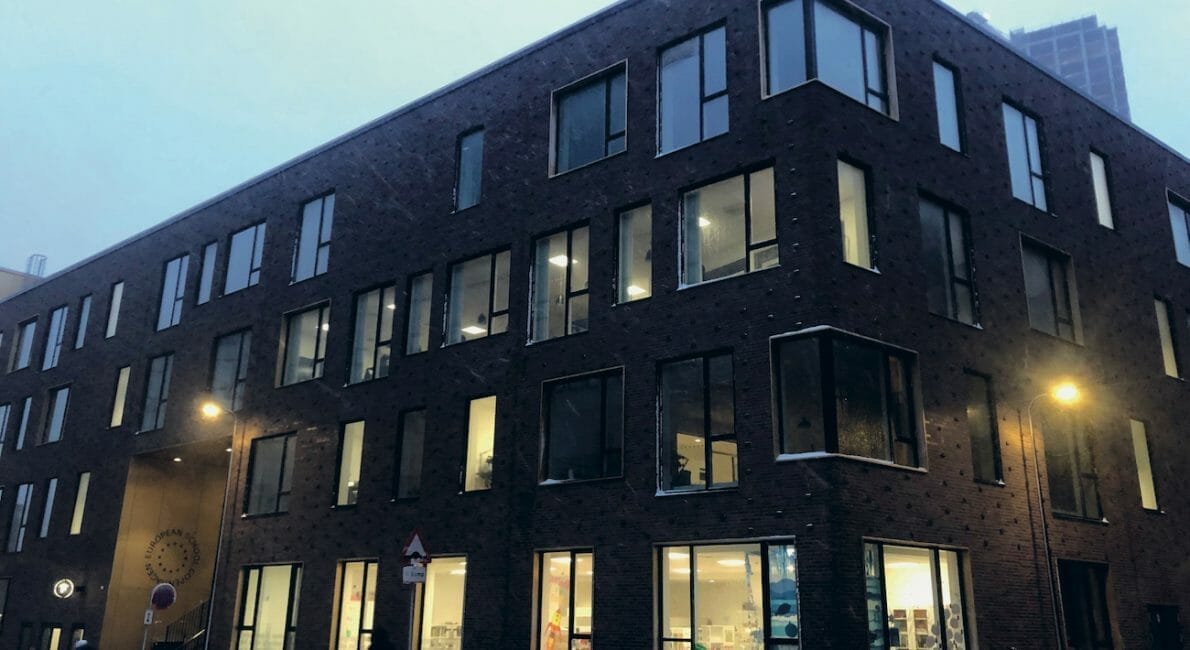The article was originally published in April 2021 in Danes Worldwides printed members’ magazine, DANES.
Text: Christiane Louise Conradt-Eberlin – Danes Worldwide’s external educational consultant
Over 11,000 English-language international schools in the world educate over six million students and offer a lot of options.
Though it may be a confusing task, parents will want to be diligent in looking into curricula, certifications, accreditations, teacher qualifications, results, vision and mission statements, school sizes, and student populations.
One thing is certain: More than anything else, parents want a school that will offer their child the best education and the best experience according to their values and preferences.
Evidence shows that 80 percent of the inquiries made to international schools are based on personal networks and word-of-mouth recommendations from other parents.
It is rare to find a parent with first hand experience of several international schools in the same foreign country, making it imperative to keep in mind that information collected from personal contacts is likely to be biased.
To choose the “right” school, it is therefore particularly important to get as much solid data as possible from the school’s website and from the admissions professional representing the school.
Expensive is not equal to being the best and low cost is not equal to being the worst
There are three types of international schools: Private for-profit or non-profit schools, public state-run schools, or municipally supported schools.
Private for-profit schools are typically owned by umbrella organizations managing the overall strategic directions in terms of profit allocations between schools, investor relations, and human resources. Such large for-profit organizations often see synergy effects in terms of operations.
Non-profit schools will reinvest profits back into the school, and most of the school board seats will be held by parents and management.
International schools supported by the state or municipality are often organised differently in terms of leadership and may be bilingual, teaching in the language of the host country and in English. The curriculum may be based on the local curriculum but may also be based on an international curriculum with a specific purpose of offering a bicultural education.

Host country schools without a specific international focus may also be considered when moving to a new country. There, teaching is in the local language, and the curriculum follows that of the country in question.
It may be wise to consider whether the school has the resources and know-how to accommodate and include students not speaking the local language.
If you are planning to stay in the country for a longer time, there may be a good rationale for choosing a host country school in order to secure better local integration; this is especially the case for families with younger children.
Which roads lead to the desired doors, and will they all open?
Aspects worth further investigation include the schools’ approaches to and balance between academic teaching and more social and creative subjects.
In the British system, for instance, students are introduced to academics at the age of four with fewer play-centred activities. In comparison, international and American programs introduce the academics later and some not until first grade at the age of six.
If it becomes necessary to switch between these two systems in a child’s early years, it is important to have this in mind. A student coming from a British system reading fluently at the age of six may not be sufficiently challenged academically when moving to a different program. Here, other elements of the child’s development will be nurtured and challenged, but parents need to be aware of what to expect and what the consequences may be from the emphasis in the school program.
Some students may need to follow their “home country” curriculum in addition to an international school or host country school curriculum to secure an easier home transition later in their school years.
Local and international schools administer exams at certain grade levels. The results of such exams may have significant impact on the students’ further schooling for entry requirements to secondary school or high school.

Language proficiency and preparation are key in this context. If a child joins a school halfway through a preparation process for an exam (e.g. the British IGCSE, Danish FP9, or French le Brevet), additional support may be necessary.
The most common international educational programs for children aged six to sixteen are the IPC, IMYC, Cambridge, PYP and MYP, the American curriculum, and the European Curriculum.
The most common international college preparatory programs offered are the British A levels, the International IB DP, the American High School Diploma and Advanced Placement (AP), and the European EB. They are built on different elements, have different requirements, and exhibit different results in terms of acceptance at universities.
An important factor to keep in mind when choosing a school and curriculum is whether enrolment in one system blocks admission to another system at a given time or even to a preferred university program in your home country or elsewhere. Make sure the admissions representatives give you correct and clear answers to such questions.
Nothing is more important than making these decisions on behalf of your child’s future.
Accreditation – a stamp is not just a stamp
While host country schools are inspected by the local authorities, the international schools operate under the supervision of accrediting bodies. Schools may be accredited by several institutions depending on the program(s) they offer.
Understanding what the accrediting bodies stand for can help guide you in your selection process. The accrediting bodies normally inspect the schools by personal visit every five to ten years. You can always ask the schools when they had their last accreditation visit, and in some cases the resulting report is published on the school’s website.

International schools will often highlight accreditations on their websites. The most common accrediting bodies are CIS (Council of International Schools), NEASC (New England Association of Schools and Colleges), IBO (International Baccalaureate Organization), and Fieldworks Education.
Other organisations such as ECIS (Educational Collaborative for International Schools), COBIS (Council and British International Schools), and Cambridge Assessment are membership organisations providing professional support to the international schools. As members, the schools benefit from professional support in teacher development, management, and governance.
Other key indicators to reflect upon in your decision-making process could include:
The school’s vision and mission statement
All international schools will have been through a process where they have defined their vision and mission; this is the individual school’s value proposition and information to potential parents about the areas they prioritise. As every school has its own, parents can use it to compare schools.
It’s important to ascertain whether the vision and mission filter down from the board to the administration and into the classroom instead of being just “nice words on the wall.”
Teacher qualifications
A school is never better than its teachers. The teachers’ educational backgrounds and the credentials they present when hired are important. Are there regular assessments of the teachers in order to support them but also to ensure the quality of the teaching taking place in the classrooms?

If you are pursuing an English language school, it is important that the teachers are native English speakers, and also that the foreign language teachers should be native speakers of the language they teach.
Average teacher tenure and turnover may give an indication of the environment at the school. Tenure and turnover should be balanced.
Exam results
Grades should be available on the school’s website; if not, do ask for them. These may reflect only the graduating classes, but in an accredited curriculum, they will give a good indication of the average grades obtained by the school’s students in comparison to worldwide averages.
School and class sizes
Take the size of the school into account in light of what your children have experienced previously and the environment in which they thrive the most. A school of 500 students is quite different from a school of 1,000 students in terms of what students experience.
A class size of 22 students is generally regarded as a maximum, and 12 generally produces good academic results but is at the low end in providing good social dynamics. However, you do see great achievement results in classes with fewer students but again the age of the child and what you are looking for will drive your decision on this.
English language support (EAL/ELL)
If your child is not a native English speaker, you may want to know if English language support is offered and in what form and duration.
On the other hand, if your child is a native English language speaker, you will want to look at the percentage of non-native speakers per classroom to ensure that the level of professional teaching matches what you are looking for.
Diversity – teachers and students
An international school should be characterised by a diverse student body and several teacher nationalities. If more than 25% of the student body is made up of one nationality, diversity may be limited.
This applies also to the teachers. In schools with a high percentage of host country teachers, it is important to get a sense of their prior international school experience if you are focused on a truly international school setting.
Learning support/inclusion
If your child has been determined to have a learning profile that requires support or special accommodations, it is important to know whether the school can support this need now and in the future.
Ensure that the school has complete information about tests and other observations at the time of your enquiry or application. If the school cannot support your child’s special learning requirements, either due to program limitations or the available resources and capacity, it is important that you find another school as early in the process as possible.
School fees – tuition
The international school fees have always been a subject of discussion. Depending on what country you come from and the size of the fees you are used to, the new school’s fee might seem exceedingly high or the same.

The cost of living in the country and local taxes play a role in affording school fees. Make sure you have done your fee calculations correctly and that you include “hidden” costs for e.g. language support, specialised teaching, laptops, calculators, trips, afterschool care, extra curricular activities, and fundraisers or gala events. Find out if tuition fees increase on a yearly basis.
In some countries, school fees are subsidized by the government, and you can find quality schooling fulfilling all your preferences at no or only a very low cost.
Staff and faculty seats
In many international schools, teachers and administrators are offered places at the school for their children as part of their remuneration. This can serve as an indicator of the quality of the school:
Do those working at the school choose it or prefer other schools?
Subject variety and breadth
The breadth of the subjects offered in the school is sometimes set by the curriculum model. However, the electives and the range of after-school activities and foreign language choices are a good indicator of the school’s interest in supporting a focus on the whole child.
For the International Baccalaureate, it is important that the Diploma Programme subjects offer a variety within each of the subject groups. It is a good indicator when the school offers a broad range of subjects for the students to choose from and when the admissions representative can advise on good combinations and college preferences in terms of subjects.
Parent involvement and access
At some international schools, the Parent Teacher Association (PTA) is extremely important in addition to general parent involvement. Depending on your view on this, and the spare time you have to be involved, it is a very fair question to ask what the school PTA is like.
Find out what your opportunities are to join in and if parent involvement is small, what is the school’s point of view on this.
Every school has its own system for communication and sharing information between the school and parents. Inquire how management operates with respect to parent feedback, complaints, and cooperation.
It can also be useful to understand what the teachers’ and administrations’ accessibility are outside school hours or during vacation time.
All about the looks – or maybe not
Don’t get excited or discouraged about the school building itself; looks can be deceiving. The best schools may be housed in buildings of little glamour and appeal, just as less good schools may be housed in purpose-built, state of the art facilities.
This goes for websites too and the information to be found on them. A general guideline should be that if “it” is not on the website – maybe the school does not want to talk about it.
All of the above may sound daunting – but when it comes to your children’s future, the effort is worth it.




